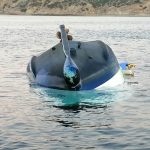In this series, we investigate the historical figures who have shaped Portugal.
Manuel succeeded to the throne of Portugal in 1495, just as the Age of Discoveries was accelerating and the profits from trade were beginning to mount. But this ambitious young king spent the entirety of his 26-year reign upping the pace even more, securing Portugal its ‘Golden Age’ and, in the process, making himself the wealthiest monarch in Europe – and the most absolute ruler the country had yet seen.
Manuel consolidated his good fortune quickly, making the inspired choice to select the young Vasco da Gama to lead the attempt to round the Cape and gain access to the trade routes to India. Da Gama’s 1497–9 voyage succeeded brilliantly, presenting Manuel with two powerful opportunities at the start of his reign. Firstly, he could redirect the spice trade between Asia and Europe to Portuguese-controlled sea routes. Secondly, by linking up with the Christian rulers, including Prester John, whom he hoped to find in Asia, he could suppress Islamic rule. Ultimately, he believed he could push on from this advantage to recover Jerusalem and become its Christian King.
These vaulting ambitions needed financing, so Manuel pumped resources into a massive expansion of Portugal’s sea trading. With more ships and more sailings, spices poured into Lisbon, with Manuel creaming off the customs duties. Receipts from the spice trade grew 17-fold between 1490 and 1590. The principal commodity was pepper, which Manuel smartly declared to be a royal monopoly in 1520.
With abundant wealth pouring into the court, Manuel consolidated this by rapidly expanding royal power and patronage. He set about a swift reorganisation of the Catholic church in Portugal. Without much protest from Rome, he began making clerical appointments himself, placing his own supporters in key church roles, even making his fifth son a bishop at the age of seven. He and another son both went on to become cardinals.
He had the entire legal code of Portugal rewritten and published as the Manueline Ordinances in 1512. He also took control of map and globe production, forbidding their distribution beyond state authorities.
Through the Misericordia, a charitable group founded by Lisbon burghers in 1498, Manuel took control of hospitals. By the end of his reign, 60 hospital groups run through this body were spread across Portugal’s territories.
The other steadily increasing source of wealth for Portugal was the slave trade, and Manuel also took direct control by ordering all slave landings to take place in Lisbon rather than Lagos.
As Manuel’s political control intensified, he needed to strengthen his physical presence, too. He ordered the construction of a vast new royal palace on the banks of the Tagus, which brought annual armadas of galleons, carracks, and caravels transporting commodities such as gold, ivory, and spices to Lisbon from Portuguese trading posts and colonies across Africa and Asia. Manuel could look out onto ‘India House’ responsible for the regulation of all Portuguese imperial trade, and the source of his ever-increasing wealth. The king had many other vanity projects in Lisbon, including the famous Belém Tower, a fortification which when initially built stood prominently out in the river. He was also responsible for the construction of the Jeronimos Monastery in Belem.
Manuel flaunted his authority. He decreed that no subject should be above him, so he was always placed on a raised dais at any meeting. He loved to parade through the streets of Lisbon, accompanied by exotic animals brought back from the African trade voyages. He wanted other rulers to see his power too, and sent the Pope the gift of an elephant. The Pope rather took to it, so Manuel followed that up by sending a rhino. However, it died in a shipwreck. Undaunted, Manuel had it stuffed and forwarded to Rome anyway.
While Manuel’s personal wealth and power had absurdly ostentatious aspects, his success promoted Portugal’s power. He also supported Vasco da Gama’s legendary voyages, as well as those of Pedro Alvares Cabral, who discovered and laid claim to Brazil in 1500. Likewise, he backed Afonso de Albuquerque, whose voyages led to establishment of Portuguese outposts in Cochin and Goa.
Leaning on the 1494 Treaty of Tordesillas – by which papal authority granted to Portugal all discoveries east of an arbitrary meridian roughly passing the Cape Verde Islands – Manuel proclaimed himself ‘Lord of Conquest, Navigation and Trade’ across what he understood to be all of Asia and India, just so that everyone was clear who was in charge.
Master of everything – except the plague which killed him in 1521 – his relatively short and hectic reign made Portugal a power to be reckoned with in Europe.
Next month: Vasco da Gama
Image: Portrait of John II of Portugal (1469-1521) at Museu de Marinha © Portuguese School, CC BY-SA 4.0, via Wikimedia Commons













